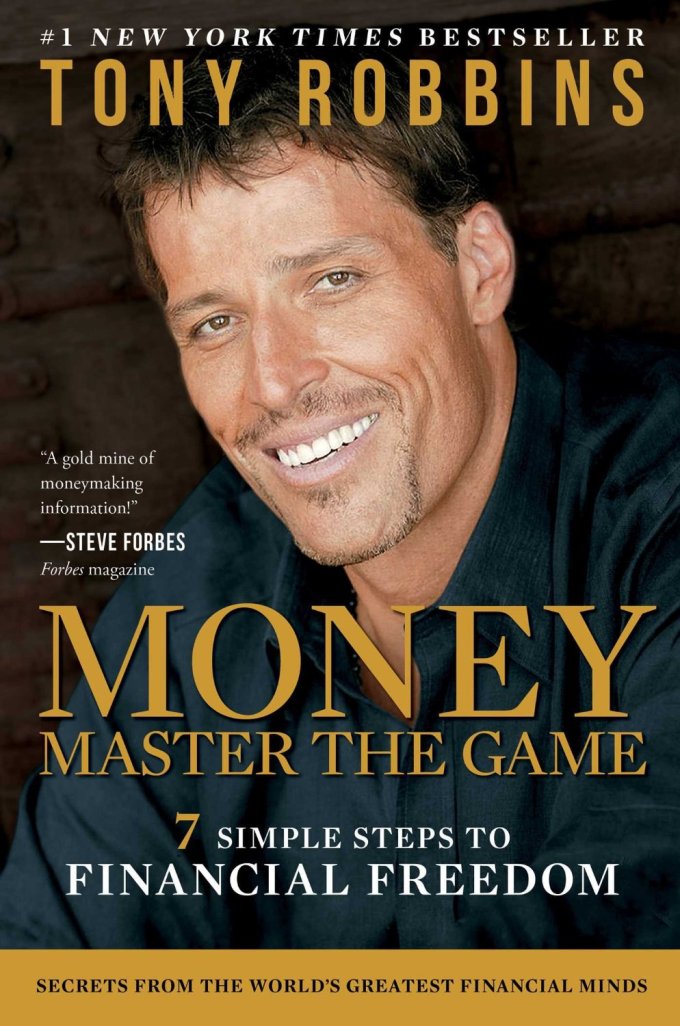Tony Robbins epic 20 hour read Money Master the Game: 7 Simple Steps to Financial Freedom was very informative, especially to a newer investor willing to consume any reasonable advice on the subject.
Though drawn out at times and a bit of an over done promotion for a few products (fixed index annuities); I thoroughly enjoyed the interview section (minus Tony's repetitious response of "awesome") and the detailed portfolio breakdowns from so many successful advisors.
I found the chapter on dollar-cost averaging most beneficial. This tiny part of Tony's huge novel inspired me to auto-invest to our SEP and IRAs every Tuesday in addition to our 1st of the month contribution, electing the funds to be directly invested in to VDIGX - Vanguard Dividend Growth Fund and VHDYX - Vanguard High Dividend Yield Index Fund Investor Shares.
This move will add $7200 to our portfolios each year, finally bringing our retirement investments up to 13.22% of our taxable income a year (my goal being 15%). Now to spend the rest of the morning deciding where to put the other 1.78%.
The dollar-cost averaging excerpt from Robbins' Money Master the Game book is below:
Example 1
• The index stays at $100 per share for the first year.
• It goes down to $60 the next year.
• It stays at $60 the third year.
• Then in the fourth year, it shoots up to $140.
• In the fifth year, it ends up at $100, the same place where you started.
Example 2
• The market is at $100 the first year.
• $110 the second year.
• $120 the third.
• $130 the fourth, and
• $140 the fifth year.
So, which index do you think ends up making you the most money after five years? Your instincts might tell you that you’d do better in the second scenario, with steady gains, but you’d be wrong. You can actually make higher returns by investing regularly in a volatile stock market.
Think about it for a moment: in example 1, by investing the same amount of dollars, you actually get to buy more shares when the index was cheaper at $60, so you owned more of the market when the price went back up!
Here’s Burt Malkiel’s chart that shows how it happens:
After five years of a steadily rising market, your $5,000 turns into $5,915. Not bad.
But in that volatile market, you make 14.5% more in profit, winding up with $6,048! The problem, Malkiel told me, is that most people don’t let the first scenario work for them. “When the market falls, they say, ‘Oh my God! I’m going to sell!’ So you have to keep your head and keep a steady course.”
Investors learned a hard lesson during the first ten years of the 2000s, or what’s known in financial circles as the lost decade. If you put all your money into the US stock market at the beginning of 2000, you got killed. One dollar invested in the S&P 500 on December 31, 1999, was worth 90 cents by the end of 2009. But according to Burt Malkiel, if you had spread out your investments through dollar-cost averaging during the same time period, you would have made money!
Malkiel authored a Wall Street Journal article titled “ ‘Buy and Hold’ Is Still a Winner,” in which he explained that if you were diversified among a basket of index funds, including US stocks, foreign stocks, and emerging-market stocks, bonds, and real estate, between the beginning of 2000 and the end of 2009, a $100,000 initial investment would have grown to $191,859. That’s over 6.7% annually during a lost decade.
“Dollar-cost averaging is how you make the volatility of the market work for you,” he told me.
Everyone from Warren Buffett’s mentor Benjamin Graham to Burt Malkiel and many of the most respected academics certainly make a case for using dollar-cost averaging when you’re investing a percentage of your steady stream of income. But if you have a lump sum to invest, it may not be the best approach. If this is your current situation, read the breakout box in this chapter titled “Dollar-Cost Averaging Versus Lump-Sum Investing.”
What dollar-cost averaging really means is systematically putting the same amount of money across your full portfolio—not just the stock portion.
Remember, volatility can be your friend with dollar-cost averaging, and it can also allow for another technique that will keep you on track, “rebalancing,” which we’ll address in a moment.
So what’s the best way to put dollar-cost averaging to work for you? Luckily, most people who have 401(k)s or 403(b)s that automatically invest the same amount on a fixed time schedule already reap the benefits of dollar-cost averaging. But if you don’t have an automated system, it’s easy to set one up. I have a self-employed friend who set up her own tax-advantaged retirement account with Vanguard, and she’s instructed it to automatically deduct $1,000 from her bank account every month to distribute among her diversified index funds. She knows she might not always have the discipline to buy when one market feels too high or another drops too low, so she takes herself out of the picture. She’s a long-term investor who doesn’t worry about timing anymore, because her system is automated, and the decision is out of her hands.
There’s a way to make dollar-cost averaging even easier, and that’s by setting up an account with Stronghold, where it will do this for you automatically.
Also, remember, in the next section I’ll show you an extraordinary tool that can protect you from losing your principal in these volatile times. Where, even if your timing is all wrong, you don’t lose a dime in the stock market. And if you’re right, you win even bigger. But before we get there, let’s have a look at a second time-tested pattern of investing that will protect your savings and help you maximize your Freedom Fund as you build true wealth.
In closing, I'm gleefully up at 4am thanks to my Miracle Morning. Viva!

